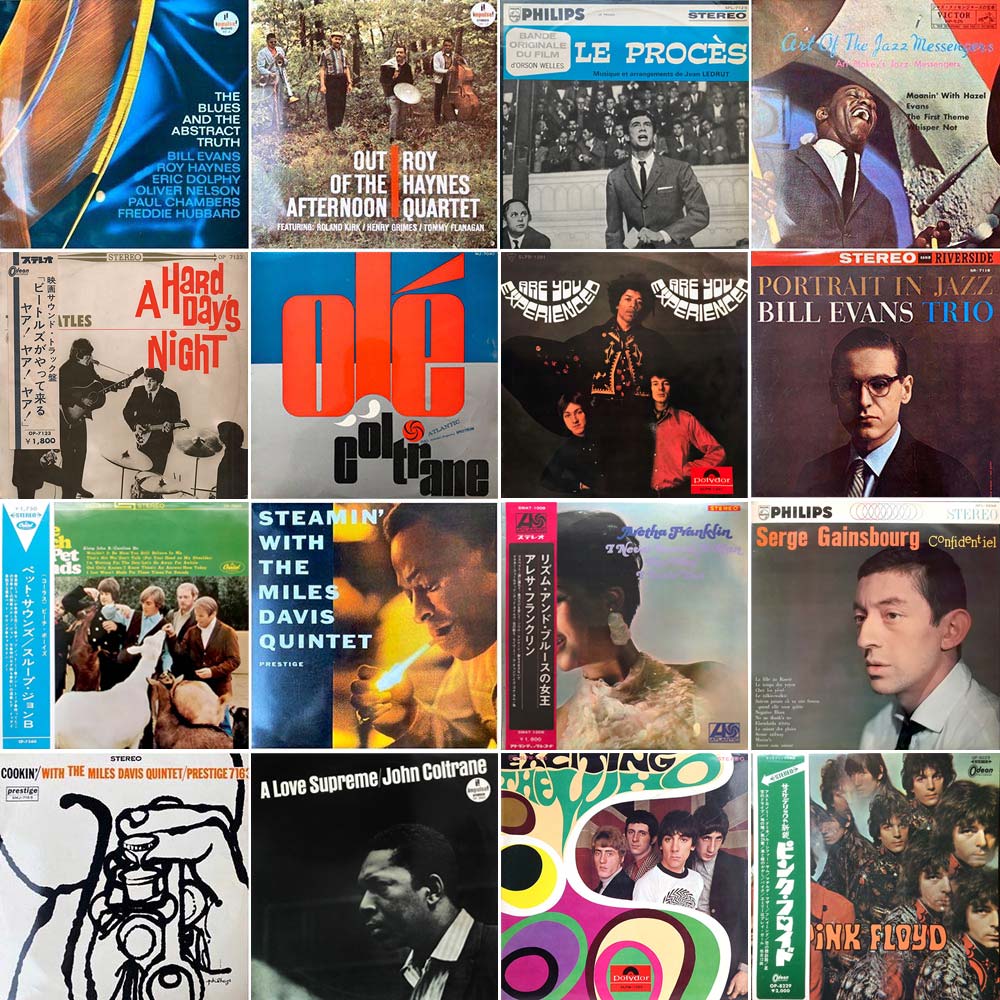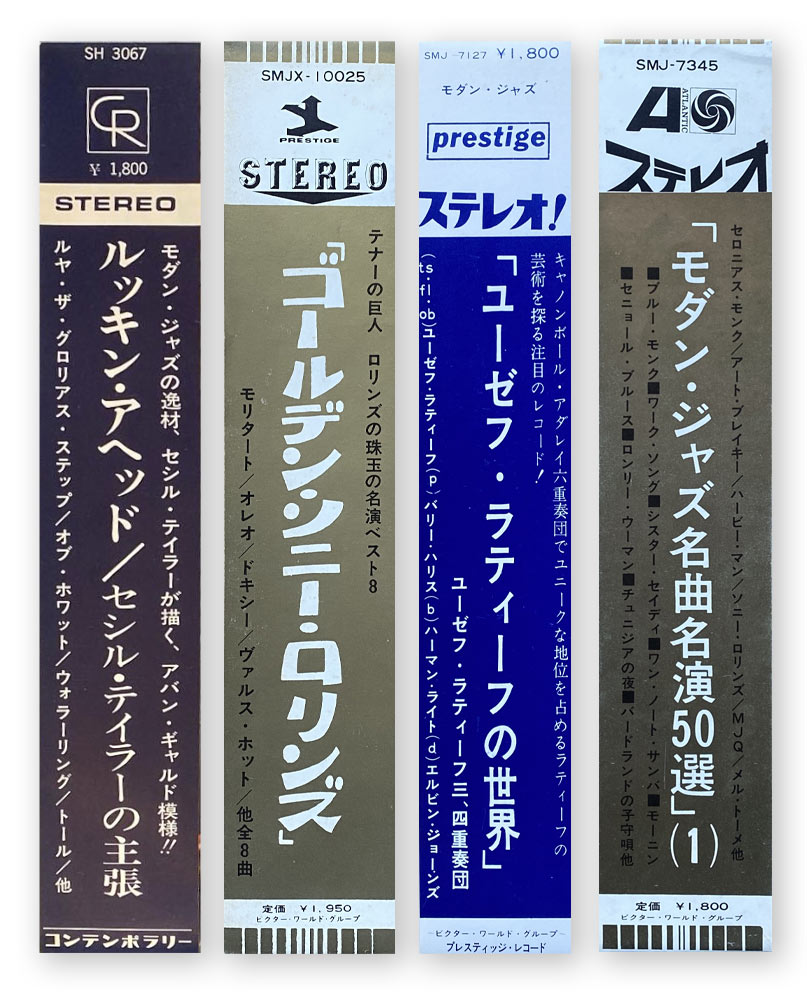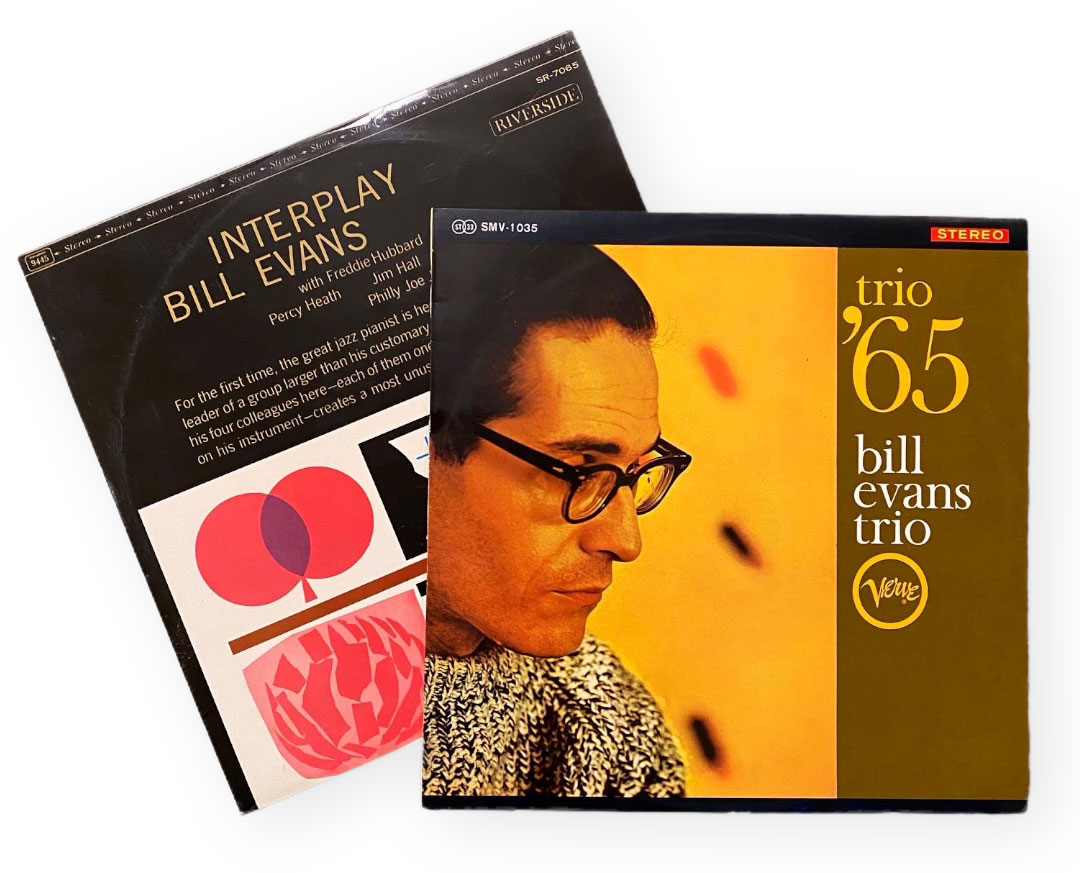FREE delivery worldwide with 300 € of purchase*
About us
Contact us

Record Science # 1
Anatomy of an original Japanese pressing
New on our blog, the "Record Science" series ! In this first article, Plexus takes you to Japan for a diggin' masterclass about the richness and the high requirement of the Japanese original pressings.
Published on october 18, 2022
by Plexus

An unprecedented meeting for vinyl record lovers
The discovery of Japanese pressings was a real revelation during our first trips to Tokyo. The attention to detail, the quality of the prints, the purity of the sound, the infinite richness of the catalog... everything seems to be made to satisfy the most demanding collector.
Japanese music production from the 50s to today is HU-GE. As we have gone through it, we have come to distinguish "degrees" of quality between the different pressing series. Knowing these differences allows us to perceive the rarity of some of these series.
Underground treasures for collectors
If the most of the 70's and 80's editions seem to be already very well identified in many paper or online books, there are still a lot of blurry areas about the older editions, from the 50's to the beginning of the 60's.

Don Cherry "Togetherness" 1966 – GLOBE DURIUM SMJ-7414
Very quickly, our interest turned to these forgotten and little documented editions, even denigrated by a majority of collectors not so long ago. A few years ago, one could still find these very first editions of jazz and pop classics, for next to nothing., in the biggest Japanese shops..
Recently, with the frenzy of Japanese imports in Europe and all around the world, a small handful of collectors and sellers have started to communicate on these very specific pressings, but there is still so much to discover.
Japanese first editions (50s/60s) specificities
Cover / Outer sleeve
Generally speaking, the very thin cardboard used in Japan for the vinyl covers offers an exceptional printing quality.
But unfortunately, this thinness makes the cover very fragile, which is why it is very difficult to find these 60 years old editions in good condition.

Three details to recognize :

Assembly/folding : as in France and UK, the covers of these first editions have a flap at the back, the flipback (or perajake).

Detachable tab : occasional, this single (or double, very rare) tab is positioned along the opening of the cover. It is also found in some French editions.

Finishing : the vast majority of prints are lined with a protective film (lamination) glossy or matte, providing a beautiful contrast to the visuals.
Gatefold variant
This format of gatefold often includes an attached booklet, in this case, the gatefold is no longer "flipback".
The cardboard of the gatefolds remains as thin as the standard format, but it is very often offered a specific treatment (unique texture, embossing or relief) :


Dizzy Gillespie And The Big Band "The New Continent" – MERCURY SMX-7031
Label
The original Japanese editions (50's/60's) labels are also easily recognizable. The editing work is again executed with an exceptional level.

Gil Evans "Big Stuff" 1965 – PRESTIGE SMJ-7288
Each label presents a specific graphic declination, respecting the codes and symbols unique to each publishing house. Atlantic, Contemporary, Columbia, Impulse, CBS... each company is perfectly represented with a respect of the color codes and patterns.
Three details to recognize :

Deep-groove : as on many American pressings, and some European ones, the deep-groove is very visible. It indicates a first printing (or very close), and confirms its age.

The slogans and/or logo of each label are also fully respected: "360 sound" from CBS, "Hi-Fi Stereo" from Philips, "Full Dynamics - Frequency Spectrum" from Atlantic...

Occasional mentions of "Super Record" or "Ever-Clean", indicating a certain type of pressing.

The "Ever-Clean" red discs
This is a series produced by Toshiba Records, specifically on translucent red vinyl. The aim was to remove the static problems inherent to the medium, and to propose an audiophile version of the recording. These pressings are very limited and rare, and from experience, have a unique sound quality.
Beyond the integration of the respective graphic elements of each label, the Japanese edition also adds unique information to the pressing. The much rarer "promo" insert (or stamp) for example, is a small set of 3 kanji signifying that it is a promotional copy*:

* Japanese "promo" pressings
Promotional series, contrary to popular belief, are very common in Japan. It is even possible that some references were only released as promotional editions, and were never really marketed (or even as is).
About the editions of the 50s and 60s, their number of copies was not really significant yet, it is really with the boom of the 70s production that these promo versions spread and became almost a standard.
OBI, OIS and inserts

Of course, each pressing gets his famous "obi" (informative paper banner) : a very coveted item by all Japanese pressings collectors.
It remains very hard to find on these original pressings, being often removed and destroyed because of their great fragility.
These banners complete the already splendid covers, and symbolize wonderfully this japanese attention about detail and perfection, the Shokunin.
With these OBI, the Japanese graphic designers have shown an inventiveness and a talent beyond compare. Many variations of color and shape exist! We can mention the very rare Hankake: an OBI made of a single panel, simply put on the cover, with almost no attach. You can read this article in which an enthusiast has listed all the possible variations just for the Beatles' records!

Yusef Lateef "Into Something" – NEW JAZZ SMJ 7127
The O.I.S. (Original Inner Sleeve) is another typical example. For each label, a specific OIS, once again made attention to perfection: plastic lined, made of rice paper, with precious flaps, swarming with logos and slogans, each one more fantastic than the other...



Also, the insert is often present (but very difficult to find). It completes the information on the back cover and translates it when it is still in English or original language (not a perfectly reliable rule).

It is possible - but rare - to find a cover already translated in Japanese on the back, but with an additional insert. It remains very difficult to know for some of these pressings if the presence of an insert was systematic or not.
Talking about Japanese pressing
Concerning the "audiophile" quality of these pressings, one must take into consideration that it is very difficult to find these discs in perfect condition. But in the case of a record in excellent condition, the listening can be outstanding.
Keep in mind : as for some Blue Note American original pressings, some Japanese original pressings can be perfectly disappointing. Nevertheless, some general trends are there!

Listening
It is not necessarily a question of precision and clarity of the sound (contrary to the Japanese pressings of the 70's/80's). The very specific remastering work of the Japanese during the 70's has not been done yet. Most of these 50s/60s pressings are on the contrary very close to the American Mono editions.
The listening remains "centered" on a very dynamic and rich medium register.
A great depth of the sound image is well present, even more so on the Mono editions.
The original recording "breathes" and is perfectly respected. No distorted mastering, all the warmth of the 50-60's sound is present, from the exceptional microphone pickups to the analog tube transfers. The defects of recording are always apparent but transmit this unique charm.
A grooves fragility can cause some saturation or distortion defects when the record is not in perfect condition. This fragility is much less present on the Ever-Clean editions.

Bill Evans Trio "Trio '65" – VERVE SMV-1035
Bill Evans Quintet "Interplay" 1962 – RIVERSIDE SR-7065
Few names to drop
These specific features were developed mainly by a few Japanese companies: Victor Record Company, King Record and Toshiba Musical industries. Some other companies such as Nippon Columbia also participated in the manufacturing of these pressings, but the great majority was executed by these first 3.
To note also, the existence of an equivalent to the 45trs format with the same attention to detail, from the flap covers to the labels with deep groove.
With the 70's, the end of an era
From the end of the 60's and the beginning of the 70's, a transition takes place and new standards are set, with a new mastering process and new printing techniques for the covers. Production was developing on a much larger scale and the supremacy of Japanese editions began to reach an international audience. Japanese pressing as the general public knows it today finally takes off.
So the musical register remains quite limited concerning these first pre-70's editions, and is limited to the production made from the beginning of the 50's to the years 68-69. But all the charm fits precisely in this preciousness and rarity of the format.

THAT'S ALL FOR TODAY !
Many details deserve to be revealed, and we hope to be able to deepen this research thanks to your contributions... Contact us >
Published on october 18, 2022
by Plexus
Previous posts
Vous devez activer les cookies pour utiliser le site.
Pour savoir comment activer les cookies sur votre navigateur, rendez vous sur la page suivante:
http://www.accepterlescookies.com/

 Français
Français





